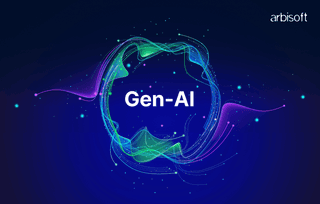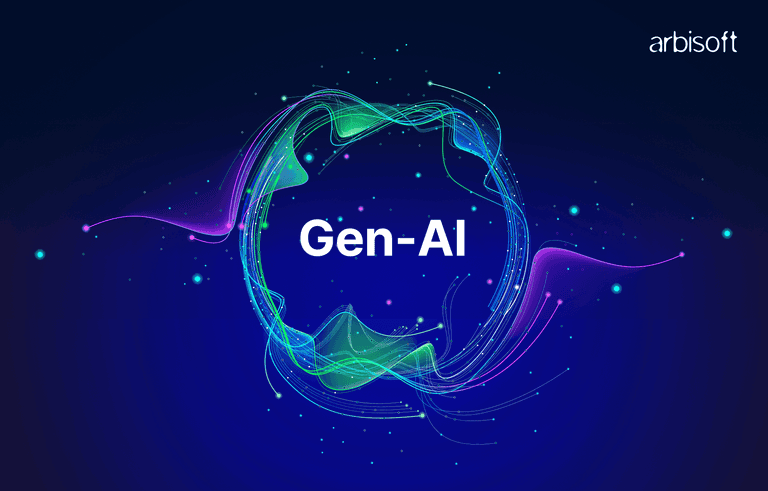We put excellence, value and quality above all - and it shows




A Technology Partnership That Goes Beyond Code

“Arbisoft has been my most trusted technology partner for now over 15 years. Arbisoft has very unique methods of recruiting and training, and the results demonstrate that. They have great teams, great positive attitudes and great communication.”
AI Face-Off: DeepSeek R1 vs. OpenAI’s o1 – Which One is Smarter?

Ever wondered how different AI models think? What if we put two of them head‑to‑head in a battle of logic, creativity, and problem‑solving? Today, we’re putting one of the leading Chinese AI models, DeepSeek R1, and OpenAI’s o1 to the test—who will come out on top?
AI models "think" differently, process data uniquely, and sometimes, even arrive at completely opposite conclusions. So, what happens when we put DeepSeek R1 against OpenAI’s o1 in a direct test of reasoning, problem-solving, and creativity?
In this blog, we’re breaking down how DeepSeek R1 and OpenAI’s o1 handle a variety of reasoning challenges.
The Comparative Experiment - DeepSeek R1 and OpenAI’s o1
Let’s see how two AI models—DeepSeek R1 and OpenAI’s o1—tackle various challenges. For each prompt, the exact instructions along with the responses from both models are shared, and the differences are in detail. Let’s dive in!
Prompt #1: Logical Deduction
**Prompt**
If all mammals are warm-blooded and dolphins are mammals, what can we conclude about dolphins?
DeepSeek R1 Reasoning & Response
Using deductive reasoning (specifically a syllogism), we can conclude:
Key Logical Steps:
- Categorical Syllogism:
- The argument follows the structure:
- All A (mammals) are B (warm-blooded).
- C (dolphins) is an A (mammal).
- Therefore, C (dolphins) is B (warm-blooded).
- The argument follows the structure:
- No Exceptions:
- The first premise states "all" mammals, leaving no room for exceptions.
- The second premise definitively categorizes dolphins as mammals.
- Inheritance of Traits:
- If a category (mammals) has a universal property (warm-bloodedness), every member of that category inherits the property.
Why This Works:
- The logic is valid (the conclusion follows necessarily from the premises).
- If the premises are true (as stated), the conclusion must be true.
Thus, we can definitively conclude - Dolphins are warm-blooded. 🐬
o1 Response
If all mammals are warm-blooded and dolphins are mammals, we can conclude that dolphins are warm-blooded. This follows the basic logical principle known as modus ponens:
- All mammals are warm-blooded.
- Dolphins are mammals.
Therefore, dolphins are warm-blooded.
Does not give reasoning details:
Final Thoughts
DeepSeek R1 walks you through the entire thought process, making sure you understand every logical step. o1, on the other hand, keeps it short and to the point—perfect for those who just want the answer, no fluff. Which approach do you prefer? Do you like the detailed explanations, or do you just want the answer?
Okay, they can think logically, but can they build? These AI minds aren't just about abstract logic – they need to be practical too.
Let's see how these AI minds handle a real-world stability challenge.
Prompt #2: Stability Challenge
**Prompt**
We have a tripod stand, a flower pot, a box of chocolates, a flat glass plate, and a water jug. How would you arrange these to ensure stability while keeping the water jug on top?
DeepSeek R1 Response
Key Reasoning:
- Tripod as Base: Its three-point contact ensures balance.
- Flower Pot + Chocolates: Lower the center of gravity, acting as a counterbalance to the top-heavy jug.
- Glass Plate: Distributes the jug’s weight evenly and prevents direct contact with the tripod’s potentially uneven surface.
- Jug Placement: Centered on the glass plate to align with the tripod’s center of support.
This configuration uses all items effectively, prioritizes weight distribution, and ensures the water jug remains stable on top. 🏺💧
o1 Response
Here’s one simple way to stack them so the jug ends up on top while keeping everything as stable as possible:
- Tripod stand on the floor
- The tripod has a wide stance and is designed to be stable on its own, so use it as the base.
- Flower pot on the tripod
- Invert the flower pot (turn it upside down) if necessary so its widest part is resting on the tripod. This creates a broad, solid surface on top.
- Box of chocolates inside (or under) the pot
- If the pot is open at the bottom, you can place the box of chocolates inside to add weight and reduce any wobble. If that doesn't fit well, you can also place the box beneath the pot or use it to level out any uneven tripod legs.
- A flat glass plate on top of the pot
- The glass plate provides a perfectly flat surface. Position it carefully on the pot so it doesn’t slide.
- Water jug on top of the glass plate
- Finally, place the water jug on the center of the plate. Because you have a wide, stable base underneath, the jug should sit without tipping.
By using the tripod’s naturally stable legs at the bottom, the (inverted) flower pot’s wide rim to support the plate in the middle, and the glass plate as a flat surface for the jug, you maximize stability. The box of chocolates can serve either as ballast inside the pot or under one of the tripod legs to level things out if needed.
Final Thoughts
DeepSeek R1 went for a systematic approach, thinking about weight distribution. o1's solution is more straightforward and practical. It's interesting to see how they both tackled the same problem with such different strategies. What do you think? Which setup would you trust more?
So, who's the better problem-solver? Let's throw a real-world wrench into the works – literally! Imagine you’re in a factory where a machine has stopped working—who would you trust to diagnose the issue faster? Let’s find out!
Prompt #3: Investigate
**Prompt**
A machine in a factory has stopped working. Based on diagnostics, the possible causes are: a loose wire (40% probability), a motor failure (30% probability), or a software malfunction (30% probability). How would you decide which issue to investigate first? Explain your logic.
DeepSeek R1 Response
The response further added a logical response to its reasoning.
Key Logic:
- Probability First: Minimizes expected downtime by tackling the most likely issue.
- Efficiency: Software checks are quicker than mechanical ones, so they follow high-probability causes.
- Risk Mitigation: If motor failure poses safety risks (e.g., overheating), escalate its priority despite lower probability.
Final Decision:
Investigate in this order: Loose Wire → Software → Motor, unless situational factors (e.g., safety, observable symptoms) dictate otherwise.
Optional Risk Matrix Approach (if impact data is available):
| Cause | Probability | Impact | Risk (P × I) |
| Loose Wire | 40% | Medium | High |
| Software Malfunction | 30% | Low | Low |
| Motor Failure | 30% | High | Medium |
In this case, motor failure might jump to second place due to higher impact. Always balance probability with real-world constraints! 🔧⚙️
It's o1’s turn now. Will it agree with DeepSeek R1's assessment, or will it have a different take on the situation? Let's find out!
o1 Response
A simple and common approach is to start investigating the most likely cause first—especially if it is also quick and easy to check. In this case, the loose wire (with a 40% probability) is more likely than either the motor failure or software malfunction (each 30%). Here’s the reasoning:
Highest Probability
The chance of a loose wire is 40%, which is higher than the 30% probability of either a motor failure or a software malfunction. Starting with the most probable issue maximizes your chance of solving the problem sooner.
Ease of Inspection
A loose wire is generally simpler to diagnose (visually inspecting connections, perhaps tightening a screw). Checking it first is often faster than, for example, running detailed software diagnostics or disassembling the motor.
Practical Troubleshooting Sequence
- If fixing the loose wire resolves the issue, you’ve saved time and resources.
- If the problem persists, you can then move on to the next most likely cause (motor or software).
By combining probability (40% vs. 30%/30%) with practicality (easier checks first), you minimize downtime and investigation effort.
Final Thoughts
So, DeepSeek R1 considered both probability and risk, which is a smart move in a real factory setting. o1 went for the most likely cause first, which is also a valid strategy. It highlights the trade-off between thoroughness and speed. What would you do in this situation? Would you prioritize the most likely cause, or would you take a more cautious approach?
After tackling a practical troubleshooting scenario in Prompt #3, we now shift gears to formal logic. In Prompt #4, both models demonstrate how they approach a rigorous, step-by-step proof of the equivalence p∧(p∨q)≡p. Let us compare their methods in a more abstract context.
From diagnosing a machine failure to dissecting logical expressions—how do these AI models handle structured, rule-based thinking? Let's shift gears and put their logical reasoning to the test.
Prompt #4: Formal Logic
**Prompt**
How would you prove this explain step by step: p ∧ (p ∨ q) ≡ p? When breaking down expressions like p∧(p∨q), how do you prioritize simplifying inner parentheses before addressing the entire statement?
DeepSeek R1 Response
Step-by-Step Proof and Explanation:
To prove
p∧(p∨q)≡p
p∧(p∨q)≡p, we can use logical equivalences and prioritize simplifying inner parentheses first. Here's how:
Step 1: Apply the Distributive Law
Step 2: Simplify Using the Idempotent Law
Step 3: Apply the Absorption Law
Final Proof Chain:
p∧(p∨q)≡(p∧p)∨(p∧q)≡p∨(p∧q)≡p
p∧(p∨q)≡(p∧p)∨(p∧q)≡p∨(p∧q)≡p
Truth Table Verification (Optional):
Prioritizing Parentheses Simplification:
- Inner Parentheses First:
Always resolve operations inside parentheses first (e.g., - p∨q
- p∨q) before combining with outer operations (e.g.,
- p∧(… )
- p∧(…)).
- Example:
- p∧(p∨q‾)
- p∧(
- p∨q
-
- ).
- Use Logical Equivalences:
Apply laws (Distributive, Idempotent, Absorption) to systematically simplify the expression. - Order of Operations:
Logical connectives have precedence (e.g., - ¬
- ¬ before
- ∧
- ∧, then
- ∨
- ∨), but parentheses override default precedence.
Why This Works:
- Distributive Law breaks down complex expressions into simpler components.
- Idempotent Law eliminates redundancy (
- p∧p=p
- p∧p=p).
- Absorption Law removes unnecessary terms when a variable dominates (
- p∨(p∧q)=p
- p∨(p∧q)=p).
By following these steps, you ensure the proof is both logically rigorous and efficient. ✅
o1 Response
Below is a step-by-step proof of the logical equivalence
p ∧ (p ∨ q) ≡ p,
followed by an explanation of how we typically approach expressions with parentheses.
1. The Absorption Law (High-Level Explanation)
2. Step-by-Step Proof Using Distributive and Simplification Laws
3. How to Prioritize Parentheses During Simplification
When you see an expression like p∧(p∨q), a good rule of thumb is:
- Identify the “inner” expressions first
- Address the entire expression
- Perform step-by-step transformations
This “inside-out” approach ensures that you handle any bracketed expressions first. Then you see how that simplified subexpression interacts with the rest of the formula, applying logical equivalences methodically.
Final Thoughts
Both models successfully proved the equivalence, but their explanations had different levels of detail. DeepSeek R1 really broke down each step, while o1 was a bit more concise. Which style of explanation do you find more helpful? Do you like the nitty-gritty details, or do you prefer a more high-level overview?
Now that we’ve explored their logic, problem-solving, and troubleshooting skills, it’s time for the ultimate question: Which AI model truly stands out overall? Let’s see how they analyze themselves in this final face-off!
Prompt #5: Comparison
DeepSeek R1 Prompt
Is OpenAI's o1 better than DeepSeek R1?
DeepSeek R1 Response
Conclusion: Which is Better?
- For Math/Coding and Budget-Conscious Users: DeepSeek R1 is superior due to its cost efficiency, open-source flexibility, and task-specific dominance 19.
- For General-Purpose and High-Stakes Tasks: OpenAI o1 remains preferable for its broader reasoning capabilities and ecosystem integration 45.
Both models represent cutting-edge advancements, but their value depends on the context of use. For developers and researchers prioritizing affordability and transparency, R1 is revolutionary. For enterprises needing reliability and advanced features, o1 retains an edge.
o1 Prompt
Is DeepSeek R1 better than OpenAI’s o1?
Then o1 was asked a similar question: 'Is DeepSeek R1 better than you?' Its response is... well, rather too interesting.
o1 Response
I’m not aware of a product or model called “DeepSeek R1,” nor of an “o1” model from OpenAI. It’s possible these are internal or experimental releases that haven’t been publicly announced, or they may be products under different names. Because there’s no widely available information about either “DeepSeek R1” or “OpenAI’s o1,” it’s difficult to make a direct comparison.
If you’re referring to something specific—perhaps early-stage research models or codenames used within a particular organization—I’d suggest:
- Checking Official Sources
- Seeking Community Input
Final Thoughts
DeepSeek R1 gave a pretty honest assessment of its strengths and weaknesses, even acknowledging where o1 might have an edge. o1's response was more cautious, highlighting the importance of reliable information. It's fascinating to see how these models approach the question of their own capabilities. What do you think about their self-assessments? Are they accurate? What other factors would you consider when comparing these models?
The Bottom Line
So, after this head-to-head showdown, who's the winner? It's not as simple as declaring one model definitively 'smarter.' DeepSeek R1 impressed us with its detailed reasoning and cost-effectiveness, making it a strong contender for developers on a budget. o1, with its broader capabilities and established ecosystem, remains a powerful choice for complex, high-stakes tasks.
Ultimately, the 'best' AI depends on your preferred approach. But one thing is clear: both DeepSeek R1 and o1 represent incredible leaps forward in AI technology, and we can't wait to see what they accomplish next. What do you think? Which model would you choose, and why?
























